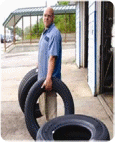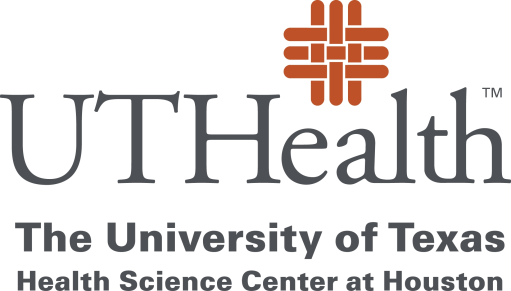Occupational Safety and Health Program Evaluation Survey Year 1
Evaluating the Effectiveness of Occupational Safety and Health Program Elements in theWholesale Retail Sector
Att H-1_OSH Program Evaluaton Survey Year 1_092315
Occupational Safety and Health Program Evaluation Survey Year 1
OMB: 0920-0949
Attachment H-1:
Occupational Safety and Health Program Evaluation Survey Year 1
Benchmarking Leading Indicators Safety Survey (BLISS)
By completing this survey you will be contributing to the development of a ground breaking benchmarking knowledge base for the State of Ohio.



After we have completed the initial phase of the study you will be given access to benchmarking data for companies in your field that may guide your efforts.
Because this is a research project the following page will ask you to provide consent if you wish to participate in the study.

Form Approved
OMB No. 0920-0949
Instructions
The University of Texas School of Public Health (UTSPH), the National Institute for Occupational Safety and Health (NIOSH) and the Ohio Bureau of Workers’ Compensation (OBWC) are considering new approaches to benchmarking organizational performance in occupational safety, health and disability management. By completing this survey you can help inform what leading indicator measures to use.
In developing new benchmarking measures relevant to ALL firms we need to ask some questions in different ways. Thus, some items may appear repetitive. Your patience in answering these questions is appreciated.
This survey will take about 12 minutes to complete
Please read the instructions for each section and each question carefully
Please answer all questions
There are no right or wrong answers, so please give us your best answer
Thanks for taking the time to complete this survey and for contributing to the development of a groundbreaking benchmarking knowledge base for the state of Ohio.
Public reporting burden of this collection of information is estimated to average 1 hours per response, including the time for reviewing instructions, searching existing data sources, gathering and maintaining the data needed, and completing and reviewing the collection of information. An agency may not conduct or sponsor, and a person is not required to respond to a collection of information unless it displays a currently valid OMB control number. Send comments regarding this burden estimate or any other aspect of this collection of information, including suggestions for reducing this burden to CDC/ATSDR Reports Clearance Officer, 1600 Clifton Road NE, MS D-74, Atlanta, Georgia 30333; ATTN: PRA (0920-0949).
Example Questions
Before starting, here are some examples:
Most
questions will ask you about the percent of time your organization is
doing something.
|
|
|
PERCENT TIME
|
|
|||||||||||
|
0 |
10 |
20 |
30 |
40 |
50 |
60 |
70 |
80 |
90 |
100 |
||||
1. How much of the time are flowers blooming in March in Ohio? |
|
|
|
||||||||||||
(30%)
Let’s try another example:
|
|
|
PERCENT TIME
|
|
|||||||||||
|
0 |
10 |
20 |
30 |
40 |
50 |
60 |
70 |
80 |
90 |
100 |
||||
2. What percent of time are leaves changing color on the trees in October in Ohio? |
|
|
|
||||||||||||
(85%)
Let’s get going…
We recognize that there is no such thing as perfection in safety and health and disability management at the workplace and that fully and effectively implementing these policies and practices are hard to achieve.
Our questions ask you to critically assess the degree to which your company is actually achieving these practices at the present time; from never (0% of the time) to always (100% of the time). Please consider your response carefully and make the best judgment you can to help give us a real world perspective.
© This organizational policies and practices questionnaire is copyrighted by The Upjohn Institute through Allan Hunt, Rochelle V. Habeck and Benjamin C. Amick III.
Please do not copy, reproduce or use without permission of the authors.
SAFETY TRAINING
To begin, we want to know about the training that your company uses to achieve and maintain its workplace safety and health performance. Please rate the extent to which your company actually achieves these practices from ‘Never’, or 0% of the time, to ‘Always’, or 100% of the time.
|
|
PERCENT TIME
|
|||||||||||
|
|
0 |
10 |
20 |
30 |
40 |
50 |
60 |
70 |
80 |
90 |
100 |
|
1. Employees are trained in safe work practices for the job hazards they will encounter. |
|
|
|||||||||||
2. Supervisors are trained in job hazards and safe work practices for jobs they supervise. |
|
|
|||||||||||
3. Employees and supervisors are trained in how to read material safety data sheets. |
|
|
|||||||||||
4. Individuals with assigned safety and health responsibilities are provided the knowledge and skills needed to perform them. |
|
|
|||||||||||
5. New employees receive safety and health training before they are allowed to begin work around the hazards. |
|
|
|||||||||||
SAFETY
DILIGENCE
Next, we want to know about the level of diligence that your company is able to maintain in addressing safety and health issues. Please rate the extent to which your company actually achieves these practices from ‘Never’, or 0% of the time, to ‘Always’, or 100% of the time.
|
|
PERCENT TIME
|
||||||||||||
|
|
0 |
10 |
20 |
30 |
40 |
50 |
60 |
70 |
80 |
90 |
100 |
||
6. Your company maintains excellent housekeeping. |
|
|
|
|||||||||||
7. Equipment is well maintained. |
|
|
|
|||||||||||
8. Unsafe working conditions are identified and improved promptly. |
|
|
|
|||||||||||
9. Employees use personal protective equipment where indicated. |
|
|
|
|||||||||||
10. Health and safety performance is part of the supervisor’s annual performance appraisal. |
|
|
|
|||||||||||
11. Supervisors/managers confront and correct unsafe behaviors and hazards when they occur. |
|
|
|
|||||||||||
12. Action is taken when safety rules are broken. |
|
|
|
|||||||||||
13. Employees are encouraged to promptly report physical symptoms arising from job tasks. |
|
|
||||||||||||
14. Written action plans are used to achieve your company’s safety and health objectives. |
|
|
||||||||||||
15. Employees actively participate in hazard prevention and control activities. |
|
|
||||||||||||
16. Your company uses multiple practices to seek employee input on safety and health issues. |
|
|
||||||||||||
HAZARD DETECTION AND CONTROL
Now, consider the practices at your company used to identify and control workplace injury and illness hazards. Please rate the extent to which your company actually achieves these practices from ‘Never’, or 0% of the time, to ‘Always’, or 100% of the time.
|
|
PERCENT TIME
|
|||||||||||
|
|
0 |
10 |
20 |
30 |
40 |
50 |
60 |
70 |
80 |
90 |
100 |
|
17. Health and safety incidents are investigated for root causes. |
|
|
|||||||||||
18. An analysis of the hazards for each job in your company is performed. |
|
|
|||||||||||
19. Engineering controls are used for all applicable hazards (e.g. special tools, equipment, or work station design). |
|
|
|||||||||||
20. Safety and health rules and work practices are fully operational. |
|
|
|||||||||||
21. Applicable Occupational Safety and Health Administration (OSHA) mandated programs are fully implemented. |
|
|
|||||||||||
22. Your company is fully prepared to deal with all emergency situations it may encounter (e.g., robbery, fire or tornado). |
|
|
|||||||||||
23. You company documents progress in correcting workplace hazards. |
|
|
|||||||||||
HEALTH AND SAFETY LEADERSHIP
Now, consider the extent to which your management strives to achieve and support excellence in safety and health performance. Please rate the extent to which your company actually achieves these practices from ‘Never’, or 0% of the time, to ‘Always’, or 100% of the time.
|
|
PERCENT TIME
|
|||||||||||
|
|
0 |
10 |
20 |
30 |
40 |
50 |
60 |
70 |
80 |
90 |
100 |
|
24. Your company analyzes injury and illness data (e.g., claims data, first aid logs) to identify root causes and target solutions. |
|
|
|||||||||||
25. Your company spends time and money on improving safety performance. |
|
|
|||||||||||
26. The safety program or committee has the responsibility, authority and resources to identify and address safety problems. |
|
|
|||||||||||
27. The safety manager (or, the person in charge of health & safety) receives support from top management. |
|
|
|||||||||||
28. Your company considers safety to be equally important as production and quality in the way work is done. |
|
|
|||||||||||
29. Top management is actively involved in the safety program. |
|
|
|||||||||||
30. Top management values and facilitates employee involvement in safety and health issues. |
|
|
|||||||||||
31. Managers and supervisors allocate the resources (budget and time) needed to properly support your company’s safety and health program. |
|
|
|||||||||||
32. The responsibilities and tasks of your safety and health program are actually assigned and communicated to specific individuals or positions. |
|
|
|||||||||||
ERGONOMIC PRACTICES
Next, we want to know to what extent your company applies ergonomic principles to reduce exposure and control risks. Please rate the extent to which your company actually achieves these practices from ‘Never’, or 0% of the time, to ‘Always’, or 100% of the time.
|
|
PERCENT TIME
|
|||||||||||
|
|
0 |
10 |
20 |
30 |
40 |
50 |
60 |
70 |
80 |
90 |
100 |
|
33. Jobs are designed to reduce heavy lifting. |
|
|
|||||||||||
34. Jobs are designed to reduce repetitive movement. |
|
|
|||||||||||
35. Ergonomic strategies are used to improve workstation design. |
|
|
|||||||||||
36. Work rotation or changes in job responsibilities are used to minimize exposure to ergonomic risks. |
|
|
|||||||||||
37. Ergonomic factors are considered in purchasing new tools, equipment, or furniture. |
|
|
|||||||||||
DISABILITY CASE MANAGEMENT
Now,
consider the ways your company attempts to manage the process after
an accident or illness occurs to minimize work disability. Please
rate the extent to which your company actually achieves these
practices from ‘Never’, or 0% of the time, to ‘Always’,
or 100% of the time.
|
|
PERCENT TIME
|
|||||||||||
|
|
0 |
10 |
20 |
30 |
40 |
50 |
60 |
70 |
80 |
90 |
100 |
|
38. Someone from your company contacts the employee shortly after an injury or illness to express concern and offer assistance. |
|
|
|||||||||||
39. Your company provides information to the treating physician about the requirements of the injured employee’s job. |
|
|
|||||||||||
40. Treating physicians are asked to identify employee restrictions and capacities and to specify a target return to work date. |
|
|
|||||||||||
41. Someone from your company makes follow-up contact with employees off work due to injury and assesses their progress toward return to work. |
|
|
|||||||||||
42. Someone from your company maintains regular communication with the injured employee’s physician to facilitate return to work. |
|
|
|||||||||||
43. Long duration claims are evaluated to determine whether more intensive services are required. |
|
|
|||||||||||
44. Claim management within your company is well-coordinated from initial injury to claim resolution. |
|
|
|||||||||||
PROACTIVE RETURN TO WORK
Next, consider the practices your company uses to facilitate bringing injured employees back to work. Please rate the extent to which your company actually achieves these practices from ‘Never’, or 0% of the time, to ‘Always’, or 100% of the time.
|
|
PERCENT TIME
|
|
||||||||||||
|
|
0 |
10 |
20 |
30 |
40 |
50 |
60 |
70 |
80 |
90 |
100 |
|
||
45. Your company makes job accommodations to enable employees to return to work (e.g., modified job duties, flexible schedule, or special equipment). |
|
|
|
||||||||||||
46. Your company provides information to treating physicians to familiarize them with modified work available to accommodate work restrictions. |
|
|
|
||||||||||||
47. Your company consults with the employee about their accommodation needs and seeks the employee’s input in the accommodation process. |
|
|
|
||||||||||||
48. Departments within your company cooperate in order to bring injured employees back to work in a timely manner. |
|
|
|
||||||||||||
49. When employees return to modified duties, your company develops a plan to transition employees back to regular job duties. |
|
|
|
||||||||||||
50. After injured or ill employees return to work, someone from your company follows up to adjust work situations as needed. |
|
|
|
||||||||||||
51. Rehabilitation professionals are used when needed to evaluate work capacity and develop rehabilitation plans to enable return-to-work. |
|
|
|
||||||||||||
52. When injured or ill employees can’t return to their former job, your company provides retraining. |
|
|
|
||||||||||||
|
|
|
|
|
|
|
|||||||||
WELLNESS
We would like to know the extent to which your company has become involved in actively promoting employee health and wellness. Please rate the extent to which your company actually achieves these practices from ‘Never’, or 0% of the time, to ‘Always’, or 100% of the time.
|
|
PERCENT TIME
|
|
||||||||||||
|
|
0 |
10 |
20 |
30 |
40 |
50 |
60 |
70 |
80 |
90 |
100 |
|
||
53. The company commits resources to support health promotion and wellness activities. |
|
|
|
||||||||||||
54. Employees are screened for health or disability risks on a continuing basis. |
|
|
|
||||||||||||
55. Employees are provided with personal data about their specific health risk factors. |
|
|
|
||||||||||||
56. Supervisors are trained to recognize job performance problems that may indicate employee difficulties (such as substance abuse, depression, stress, personal problems). |
|
|
|
||||||||||||
|
|
|
|
|
|
|
|||||||||
PEOPLE-ORIENTED CULTURE
Consider the management culture and work environment of your organization. Please rate the extent to which your company actually achieves these practices from ‘Never’, or 0% of the time, to ‘Always’, or 100% of the time.
|
PERCENT TIME
|
|
|
||||||||||||
|
|
|
0 |
10 |
20 |
30 |
40 |
50 |
60 |
70 |
80 |
90 |
100 |
||
57. Working relationships are cooperative. |
|
|
|||||||||||||
58. Employees are involved in decisions affecting their daily work. |
|
|
|||||||||||||
59. Your company shares information about the financial status and productivity needs of the company with employees. |
|
|
|||||||||||||
60. Communication is open and employees feel free to voice concerns and make suggestions. |
|
|
|||||||||||||
61. There is a high level of trust in the employee/employer relationship at your company. |
|
|
|||||||||||||
62. Employees are formally included in your company’s goal setting and planning process. |
|
|
|||||||||||||
63. Employees have some control over the work process and productivity demands. |
|
|
|||||||||||||
64. Supervisors and managers are trained in interpersonal skills such as effective communication and conflict management. |
|
|
|||||||||||||
YOUR COMPANY’S INFORMATION:
Please indicate the best answer choice for each item that best describes your company.
65. Overall, in the past 3 years, has your company’s workforce:
⃝ Decreased in numbers
⃝ Stayed the same
⃝ Increased in numbers
66. Is any of your company’s workforce represented by a union?
⃝ Yes

Skip to question 71
⃝ No
⃝ Don’t know
67. What proportion of your total workforce is represented by a union?
⃝ 0-5%
⃝ 6-10%
⃝ 11-15%
⃝ 16-20%
⃝ 21-30%
⃝ 31% or more
68. How many unions are involved?
⃝ 1
⃝ 2
⃝ 3
⃝ 4
⃝ 5
⃝ 6
⃝ 7
⃝ 8
⃝ 9
Please rate the extent to which union involvement positively impacts your company’s efforts in each of these areas from ‘Never’, or 0% of the time, to ‘Always’, or 100% of the time.
|
|
PERCENT TIME
|
|||||||||||
|
|
0 |
10 |
20 |
30 |
40 |
50 |
60 |
70 |
80 |
90 |
100 |
|
69. Union involvement enhances the effectiveness of your occupational safety and health efforts. |
|
|
|||||||||||
70. Union involvement facilitates return-to-work outcomes. |
|
|
|||||||||||
71. What is your role within your company?
⃝ Owner/CEO/President/Senior Management (VP)
⃝ Manager
⃝ Supervisor
⃝ Lead Worker
⃝ Professional Staff
⃝ Skilled/Trades Staff
⃝ Administrative Staff
⃝ Worker
72. How long have you been working at your company?
⃝ Less than 1 year
⃝ 1 to 5 years
⃝ More than 5 years
73. Have you been working as a Health and Safety professional for your company?
⃝ Yes
⃝ No Skip to question 75 (on the next page)
74. How long have you been working in a Health and Safety role for your company?
⃝ Less than 1 year
⃝ 1 to 5 years
⃝ More than 5 years
75. Are you…
⃝ Female?
⃝ Male?
76. Please enter any comments about health and safety in your company you consider important and that the survey did not cover.
________________________________________________________________________________________________________________________________________________________________________________________________________________________________________________________________________________________________________________________________________________________________________________________________________________________________________________________________________________________________________________________________________________________________________________________________________________________________________________________________________________________________________________________________________________________________________________________________________________________________________________________________________________________________________________________________________________________________________________________________________________________________________________________________________________________________________________________________________________________________
We are also doing research on how best to collect benchmarking data. To answer this question we will need up to 5 persons in your company to complete a shorter version of the same survey you completed. If 300 or more employees work at your company we would like to invite you to participate in this separate survey.
Would you be willing to be contacted to learn more?
⃝ Yes
⃝ No
THANK YOU VERY MUCH FOR YOUR COLLABORATION!
We remind you that all collected data from the survey is
SECURE
Once the study phase is complete, a link to an INDUSTRY SUMMARY REPORT will be made available to you.
| File Type | application/vnd.openxmlformats-officedocument.wordprocessingml.document |
| Author | Foley, Tamekia (CDC/NIOSH/OD) |
| File Modified | 0000-00-00 |
| File Created | 2021-01-24 |
© 2026 OMB.report | Privacy Policy




